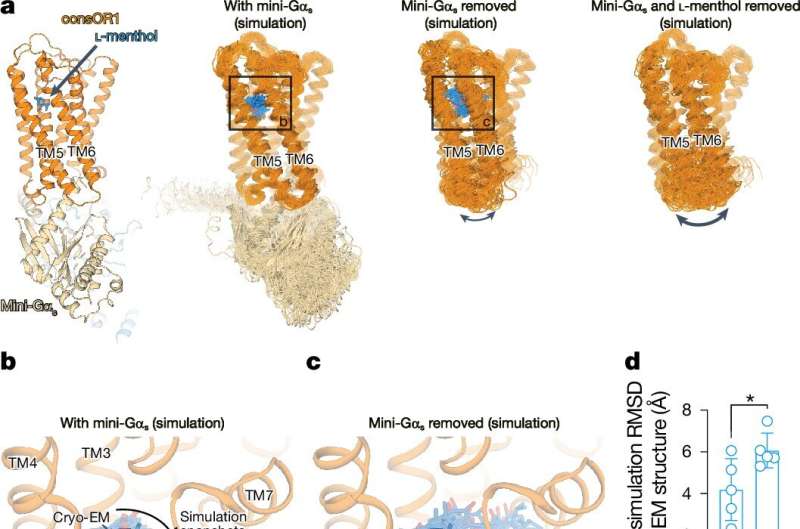Engineered Lab Receptors Shed Light on Odor Detection

November 3, 2024 report
This article has been reviewed according to Science X's editorial process and policies. Editors have highlighted the following attributes while ensuring the content's credibility:
fact-checked
peer-reviewed publication
trusted source
proofread
by Justin Jackson, Phys.org
A team of researchers led by Duke University, the University of California San Francisco, and the Beckman Research Institute of the City of Hope have engineered odorant receptors to reveal the molecular basis of odor discrimination.
Vertebrate animals perceive odors through G protein-coupled odorant receptors (ORs). Humans have about 400 such receptors, which allow us to sniff out the good from the bad odors we encounter.
The OR family comprises two main classes. Class I ORs are tuned to carboxylic acids, capturing odors of vinegar, spoiled milk, sweat, certain cheeses, animal fats, and some cooking oils. Class II ORs respond to a wide variety of odorants and represent most of the human sense of smell.
Understanding how the olfactory system detects and distinguishes odorants with diverse physicochemical properties remains a challenge due to the difficulty in visualizing these natural receptor sites in action.
Observing ORs interacting in a human nose is beyond the reach of current lab technology. Thankfully, the researchers discovered that recreating the ORs in a synthetic lab environment is something that science can do.
In the study, 'Engineered odorant receptors illuminate the basis of odor discrimination,' published in Nature, researchers used engineered ORs crafted using a consensus protein design strategy to uncover molecular properties of odorant interactions with OR.
Engineered ORs were genetically modeled after the 17 major subfamilies of human ORs, providing templates for individual native ORs with high sequence and structural similarity.
Once they designed the engineered ORs, the team created custom genetic instructions (synthetic DNA) to produce these synthetic receptors. The synthetic DNA was then inserted into vectors, small circular DNA molecules that can replicate independently within a host cell.
These vectors were introduced into human cells grown in the lab, using the cells as tiny factories that turned the genetic instructions into engineered OR proteins.
The researchers conducted cAMP accumulation assays to test the activity of the engineered ORs in response to specific odorants. This assay measures the production of cyclic AMP (cAMP), a molecule involved in signal transduction.
A cAMP assay typically uses a luminescence response that becomes dimmer during binding site activity, giving researchers a visual confirmation and providing a quantitative measure of receptor activation when odorants interact with the engineered ORs.
By comparing the responses of the engineered ORs to various odorants, the study revealed distinct modes of odorant-binding and activation mechanisms between class I and class II ORs.
The novel approach of the method overcomes the greatest barrier researchers have had in uncovering the molecular recognition of odorants by the OR superfamily. This effort will greatly advance future research into how the olfactory system detects and distinguishes a wide range of odorants.
More information: Claire A. de March et al, Engineered odorant receptors illuminate the basis of odour discrimination, Nature (2024). DOI: 10.1038/s41586-024-08126-0
Journal information: Nature
© 2024 Science X Network




